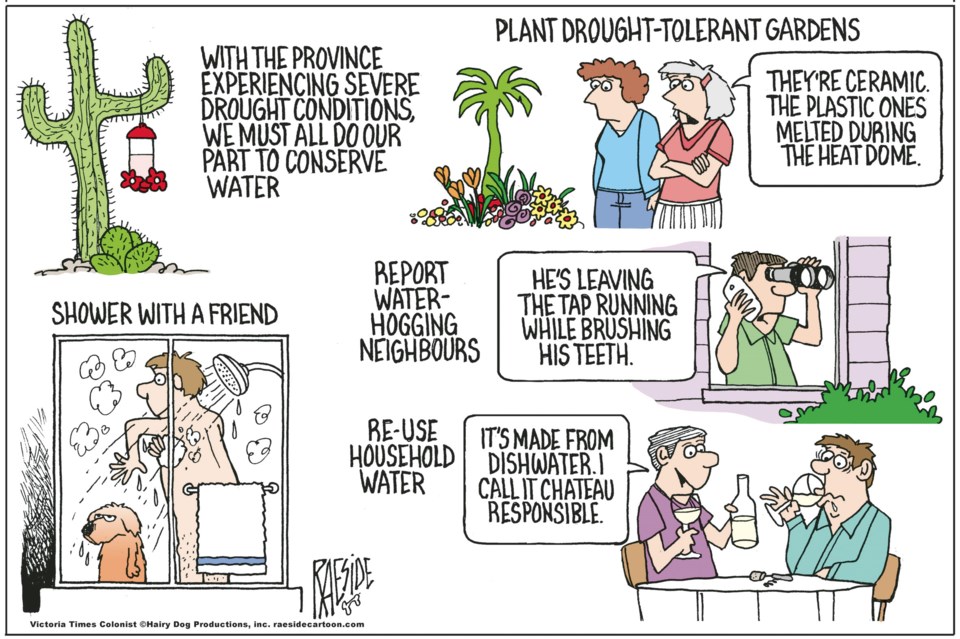Some of you might remember the summer of 2015 and how the Sunshine Coast Regional District received a commitment of almost $3.5 million in grants for the second phase of the universal water-meter project at exactly the same time it declared Stage 4 water restrictions.
There was just a drop of déjà vu this month when SCRD directors passed a bylaw to borrow up to $7.25 million (no grants this time) to finance the third and final phase of the metering project, and then, less than two weeks later, the Chapman system was put on Stage 3 restrictions.
After a two-year hiatus, there is a real chance this year of going again to Stage 4.
Back in August 2015, a total ban on outdoor tap water use was still a new, frightening concept – the SCRD had only declared Stage 4 once before, in October 2012, after the longest drought then on record. But then it repeated in 2017 and 2018. Severe water restrictions seemed to have become the summer norm.
Under immense public pressure to tap new sources to meet demand, the SCRD stuck to its regional water plan, sunk $2 million from reserves into the $5.5-million phase 2 water-meter installation, and pursued a controversial plan to draw down Chapman Lake to add emergency supply when needed.
That questionable short-term solution dragged on through regulatory limbo and finally got flushed in early 2019 when the environment minister denied the request to change the boundaries of Tetrahedron Provincial Park. By then, to its credit, the SCRD had begun exploring groundwater sources and reservoir scenarios to find a longer term fix.
The current board was the beneficiary of those efforts and directors couldn’t find enough superlatives to describe the joy of learning, not long after being elected, that the test well at Church Road in Granthams Landing had exceeded all expectations – a 2020 estimate is that the well field could reduce the Chapman system’s supply deficit by 50 per cent.
Directors have since put aside the various reservoir options that were outlined in 2019 and continue to express great confidence in managing the supply issue with the Church Road project, other groundwater sources and potential upgrades at the Gray Creek intake. With these measures still in the works, however, the only net supply gain we are aware of, apart from leak detection through metering, has been due to the Town of Gibsons expanding its municipal service up the hill into the areas formerly served by the SCRD.
The big wait now is for the province to issue a water licence for the Church Road well field. Staff’s target date to have the well field commissioned and flowing is early summer of 2022.
Comparing the present to 2015, there is no question the SCRD appears to be now in a better position. If everything proceeds according to plan, the well field should be an important and long overdue first step in expanding the regional supply. But we’re not there yet. The project could be stalled, or derailed, or it might not deliver as promised. As development continues, the need becomes more pressing every day.



